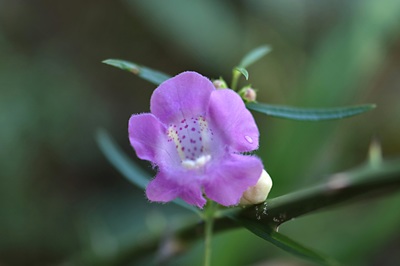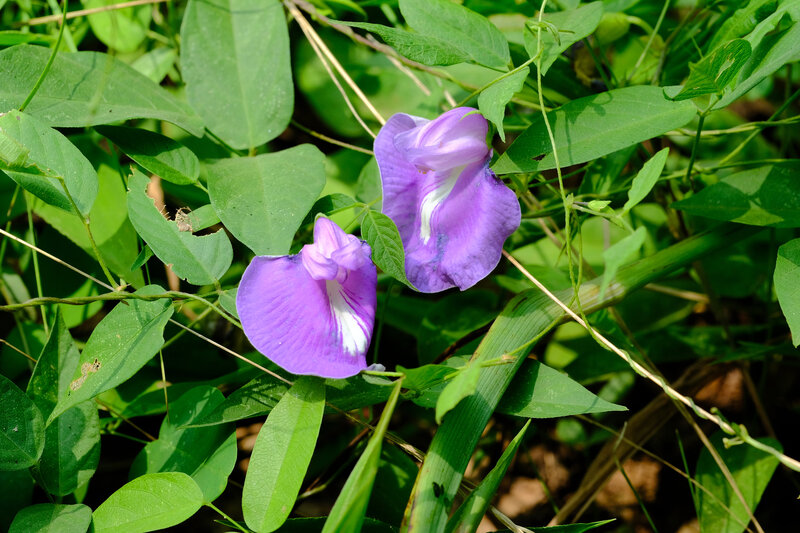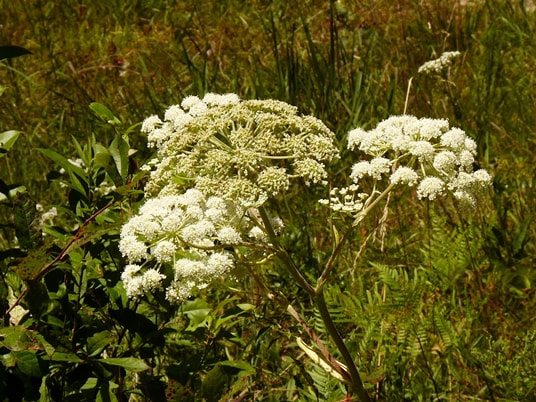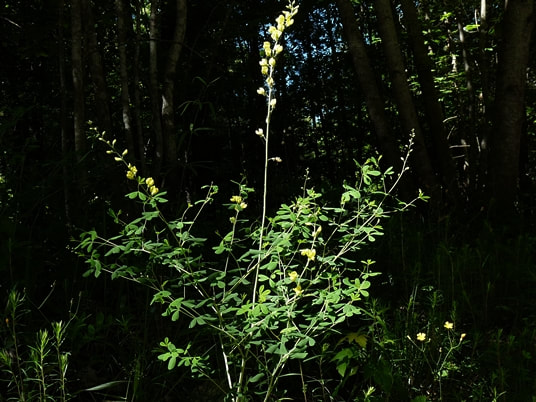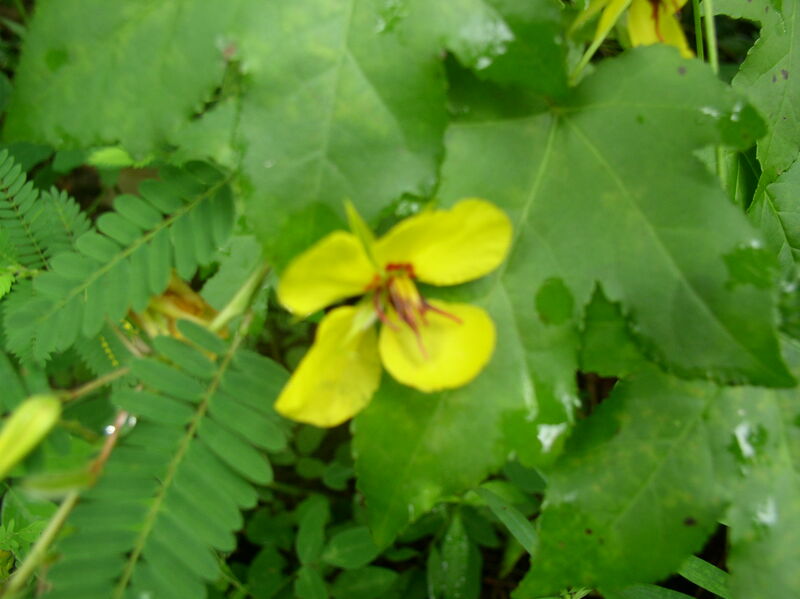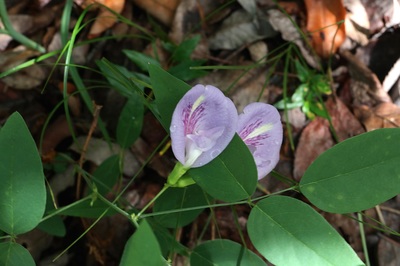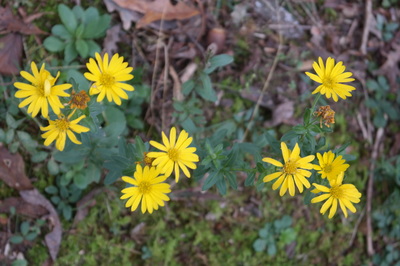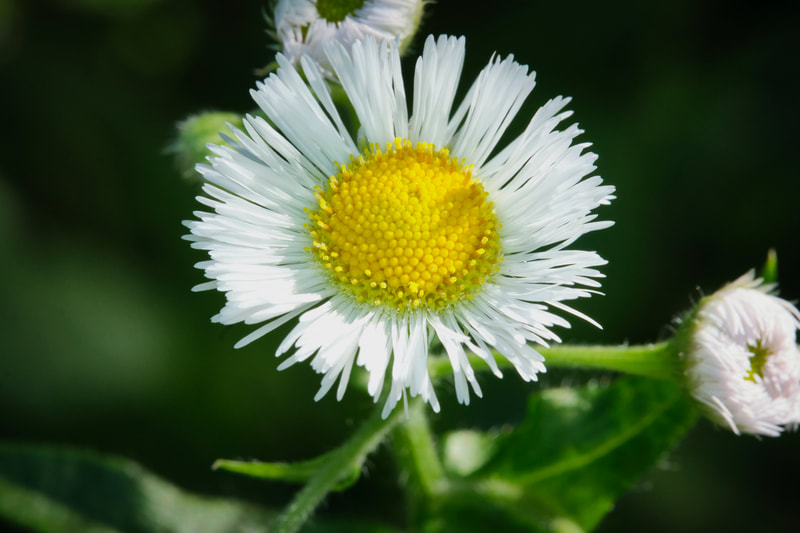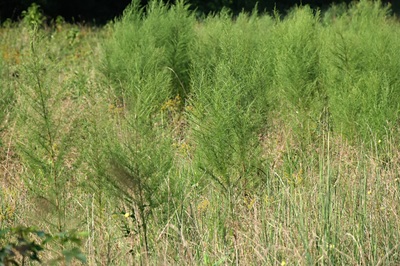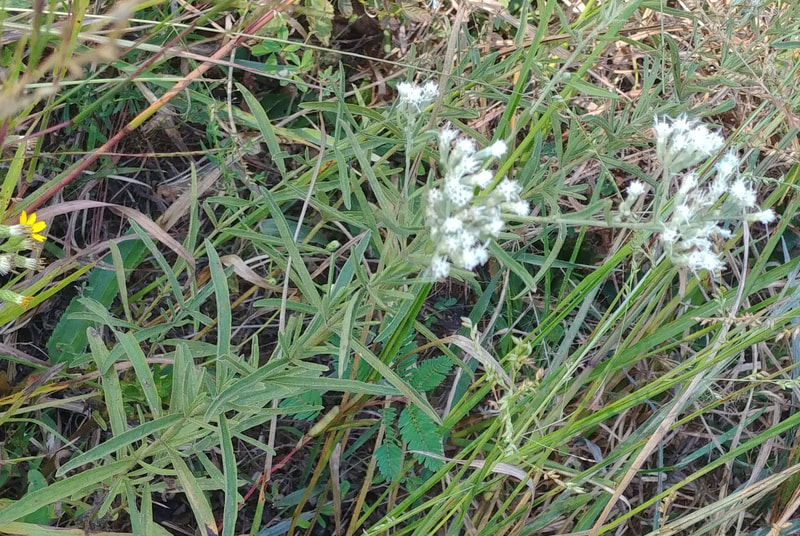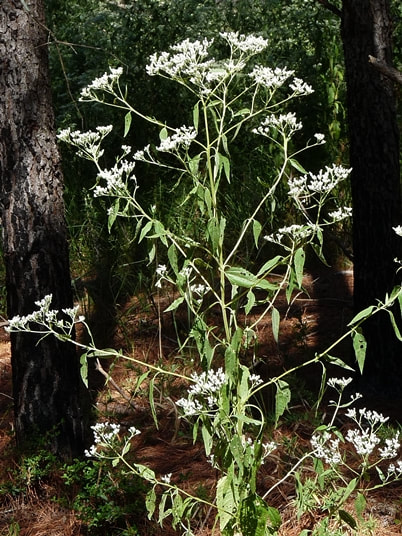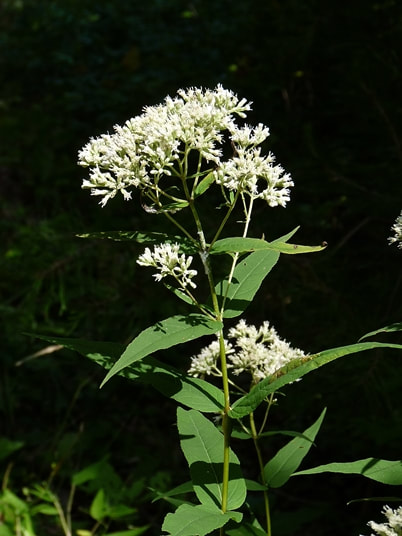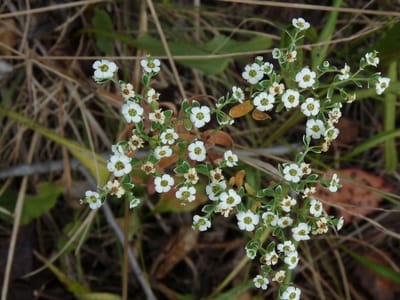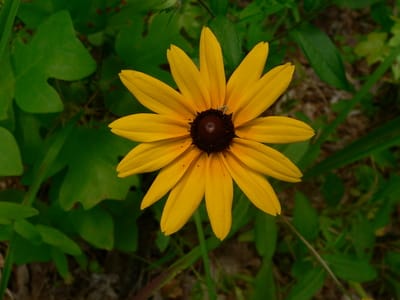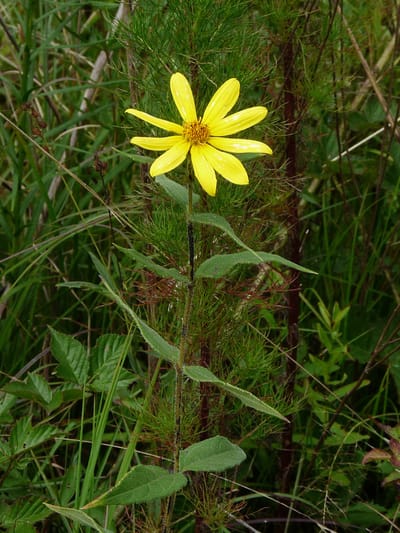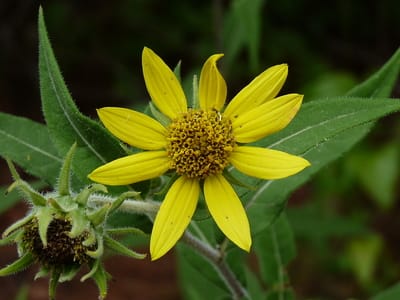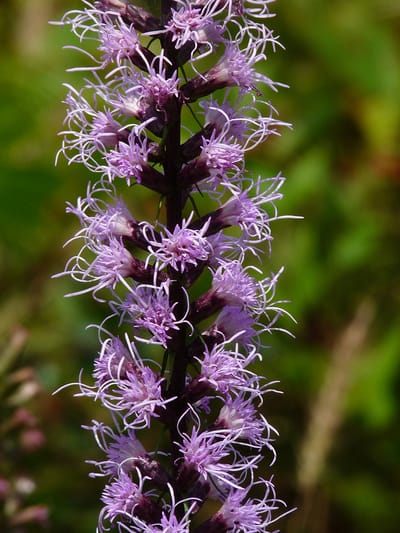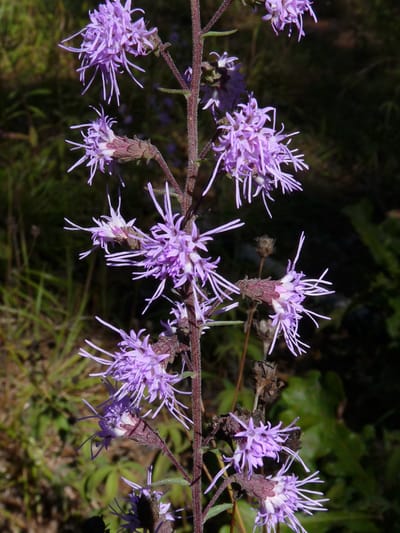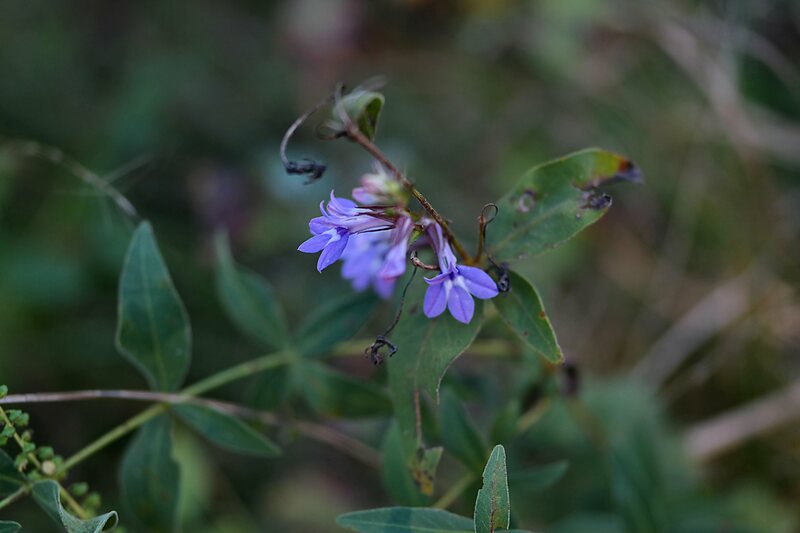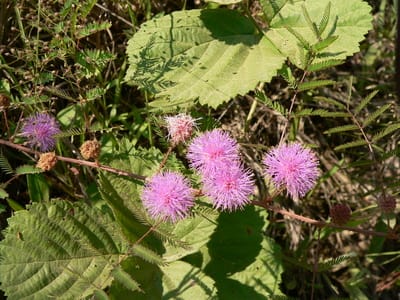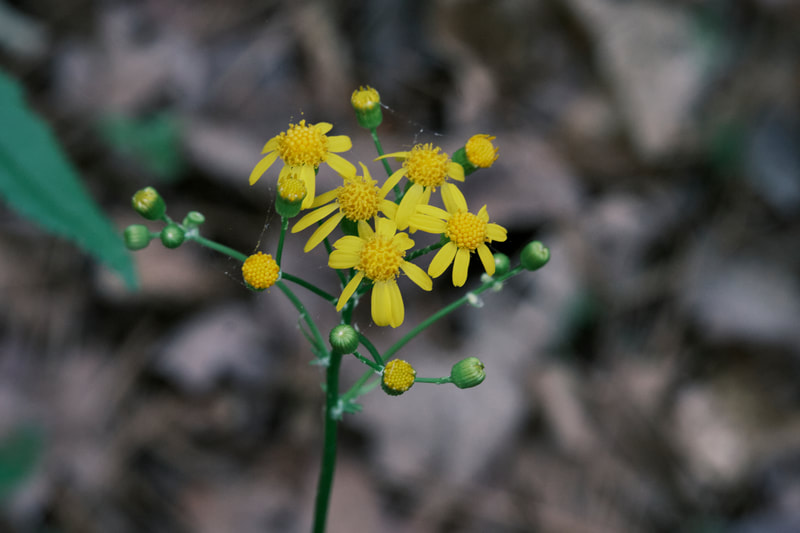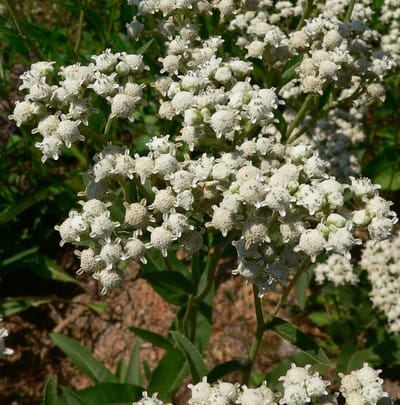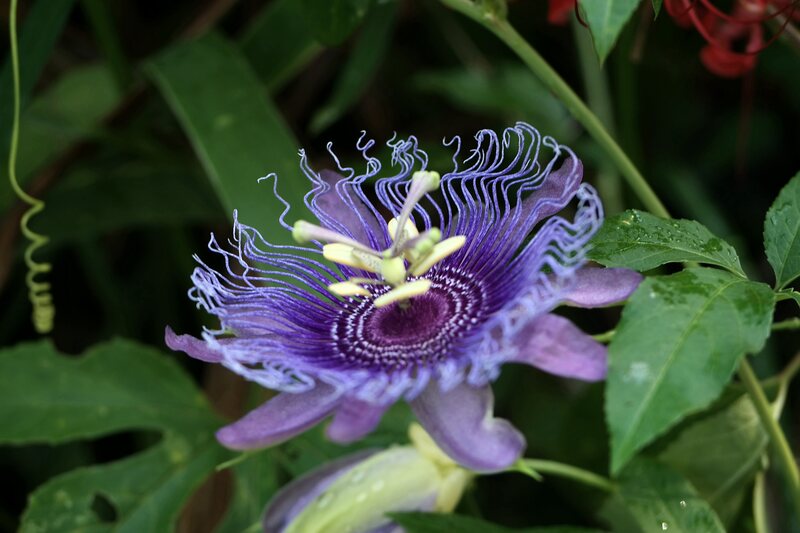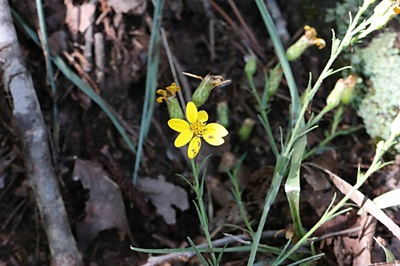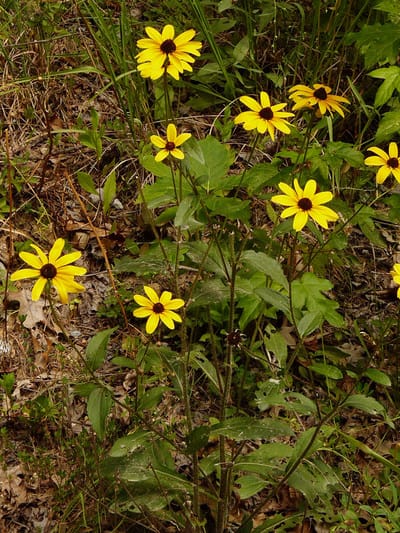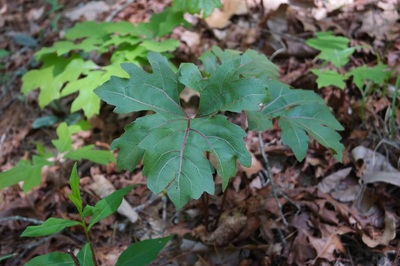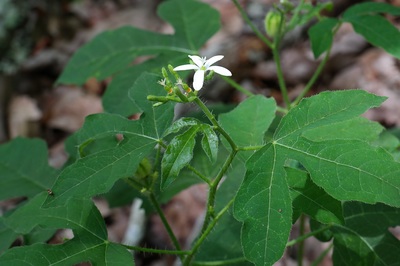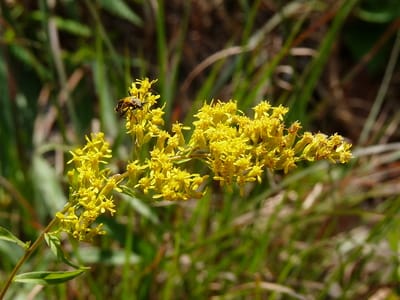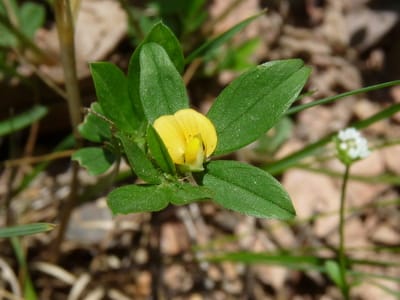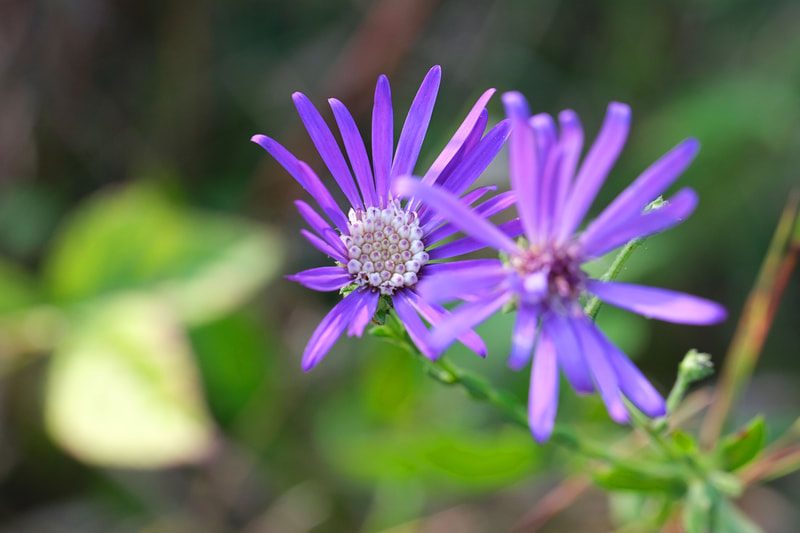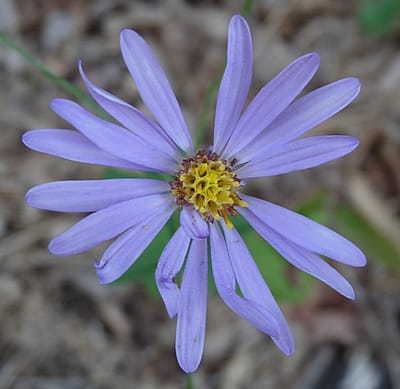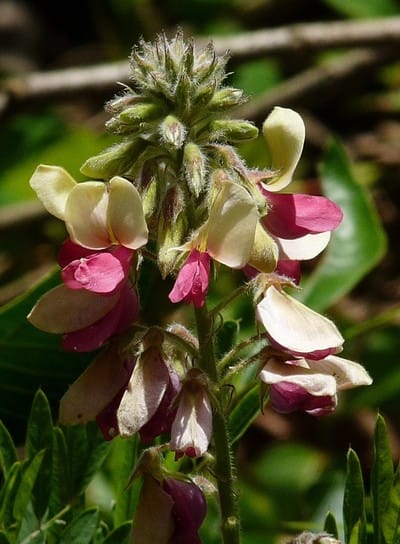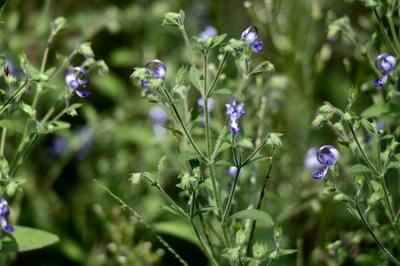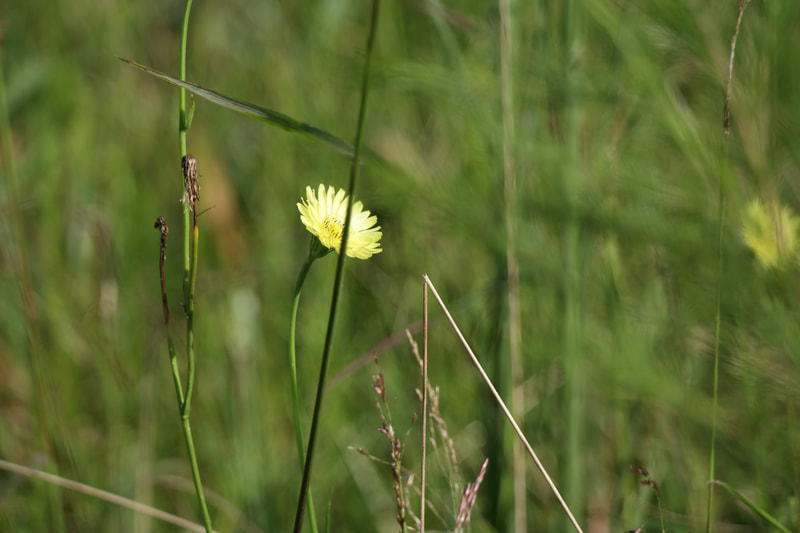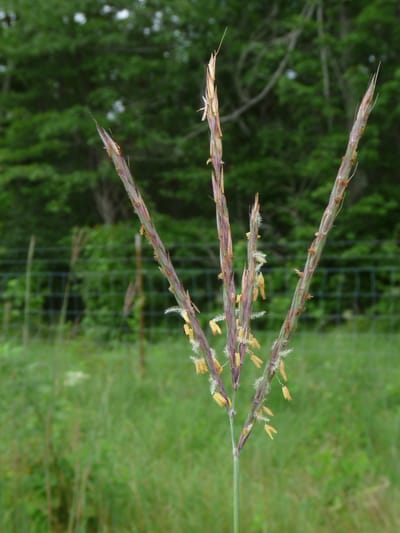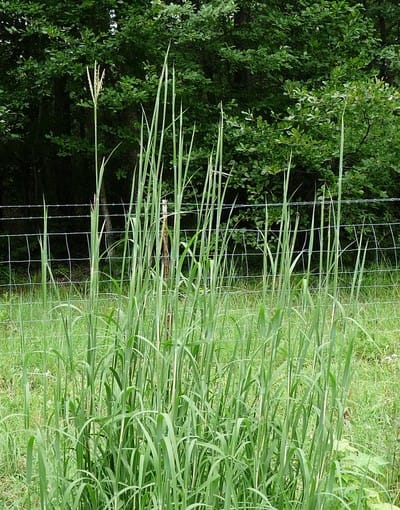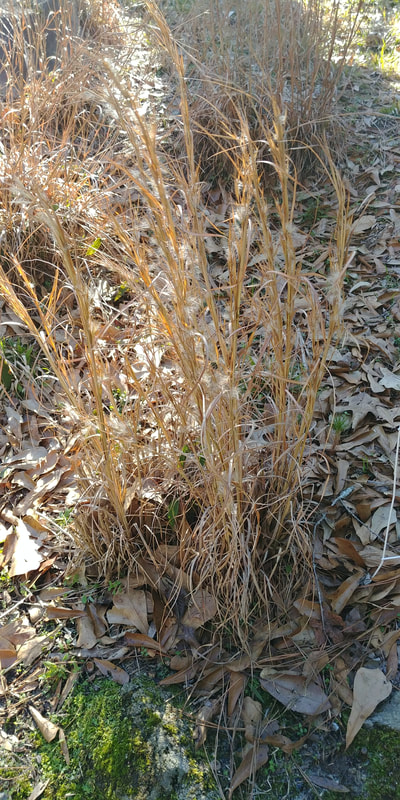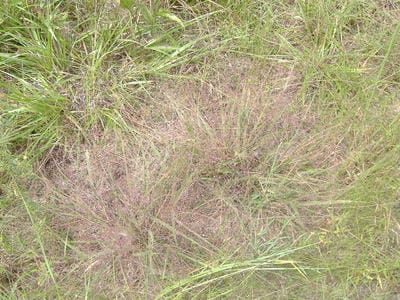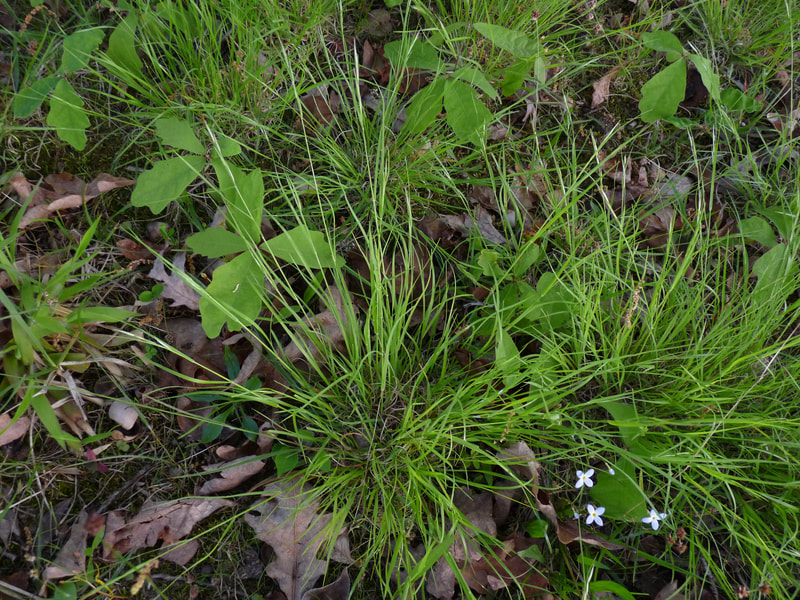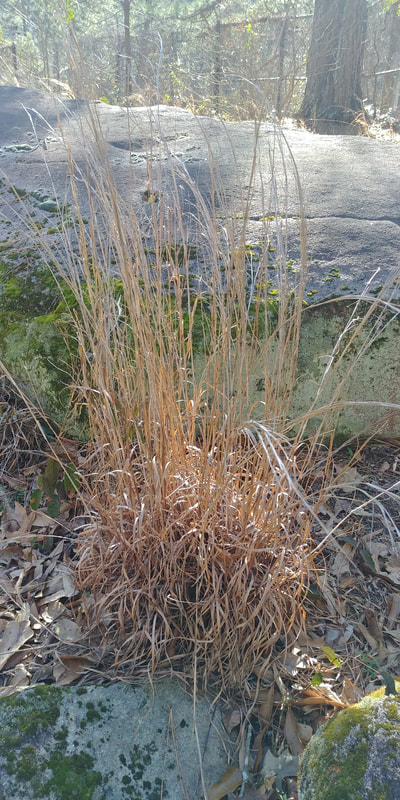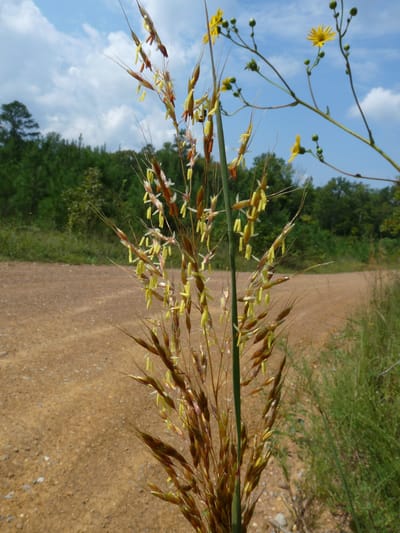Prairies and Savannas (Upland).Prairies are expanses of grasses, forbs, and shrubs that grow on deeper soils than those of glades and barrens. Savannas have a few scattered trees. Most Piedmont prairies and savannas are kept open by mowing or fire; without them, trees will eventually dominate. Prairies often develop in "old fields" in the first two decades after agricultural land or logging sites are abandoned, in a procession called "succession". During the first phases of succession, grasses, wildflowers and shrubs grow in, followed in later phases by trees.
Prairies, sometimes stretching for long distances, were more widespread in the past, when native Americans set fire to preserve them. Ecologists have concluded that for thousands of years, fire has been an important element in maintaining biodiversity on the landscape. |
Landscapes
What's special: Grasslands support many pollinators, including bees, butterflies, moths, and many other beneficial insects, which form the foundation of food chains, and are essential for sustaining natural landscapes. Birds and small mammals find food and shelter in prairies.
Conservation: It is a high priority in Georgia to restore and maintain prairies through prescribed fire, and planting prairie species under powerlines, where they are often maintained by mowing Related to: Grades into Glades and Barrens on thin soils with rock outcrops, and into Pine-Oak Woodlands as trees become denser. Grades to Wet Meadows in moister sites. |
|
Plants
Click on a plant name to see images and to learn more about each plant. Listed in order by scientific name. Wildflowers Purple gerardia Agalinis purpurea Slender gerardia Agalinis tenuifolia Hairy angelica Angelica venenosa Hemp dogbane Apocynum cannabinum Butterfly weed Asclepias tuberosa Wild indigo Baptisia tinctoria Spurred butterfly pea Centrosema virginianum Partridge pea Chamaecrista fasciculata Maryland golden-aster Chrysopsis mariana Butterfly pea Clitoria mariana Large-flowered coreopsis Coreopsis grandiflora Woodland coreopsis/Whorled coreopsis Coreopsis major Daisy fleabane Erigeron philadelphicus Dog fennel Eupatorium capillifolium Hyssopleaf boneset Eupatorium hyssopifolium Late flowering boneset Eupatorium serotinum Sessile-leaf boneset Eupatorium sessilifolium Flowering spurge Euphorbia corollata Appalachian sunflower Helianthus atrorubens Spreading sunflower Helianthus divaricatus Hairy sunflower Helianthus hirsutus Longleaf sunflower Helianthus longifolius Small-headed sunflower Helianthus microcephalus Roughleaf sunflower Helianthus strumosus Veiny hawkweed Hieracium venosum Hairy lespedeza Lespedeza hirta Downy trailing lespedeza Lespedeza procumbens Smooth trailing lespedeza Lespedeza repens Dense blazing star Liatris spicata Southern blazing star Liatris squarrulosa Downy lobelia Lobelia puberula Appalachian bergamot Monarda fistulosa Sensitive briar Mimosa microphylla Ragwort Packera anonyma Wild quinine Parthenium integrifolium Passion flower/May-pop Passiflora incarnata (a vine) Silkgrass Pityopsis graminifolia Rabbit tobacco Pseudognaphalium obtusifolium False dandelion Pyrrhopappus carolinanus Carolina rose Rosa caroliniana Black-eyed Susan Rudbeckia hirta Horse nettle Solanum carolinense Rosinweed Silphium compositum Tall goldenrod Solidago altissima Slender goldenrod Solidago erecta Eastern gray goldenrod Solidago nemoralus Licorice goldenrod/Fragrant goldenrod Solidago odora Pencil-flower Stylosanthes biflora Eastern silvery aster Symphyotrichum concolor Clasping aster Symphyotrichum patens Long-stalked aster Symphyotrichum dumosum Georgia aster Symphyotrichum georgianum Frost aster Symphyotrichum pilosum Virginia goat's-rue Tephrosia virginiana Blue curls Trichostema dichotomum Bird's-foot violet Viola pedata Grasses, Sedges and Rushes Big bluestem Andropogon gerardii Splitbeard bluestem Andropogon ternarius Broomsedge Andropogon virginicus Oval leaf sedge Carex cephalophora Silky oat-grass Danthonia sericea Poverty oat-grass Danthonia spicata Bigtop lovegrass Eragrostis hirsuta Purple lovegrass Eragrostis spectabilis Silver plumegrass Erianthus alopecuroides Eastern beard grass Gymnopogon ambiguus Pink muhly grass/hairgrass Muhlenbergia capillaris Beaked panic grass Panicum anceps/Coleataenia anceps Eastern needlegrass Piptochaetium avenaceum Purpletop/Greasy grass Tridens flavus Gamma grass Tripsacum dactyloides Little bluestem Schizachyrium scoparium Yellow Indiangrass Sorghastrum nutans Ferns Bracken fern Pteridium latiusculum |
Representative wildflowers in order of scientific name
Grasses in order by scientific name
Representative Birds |

